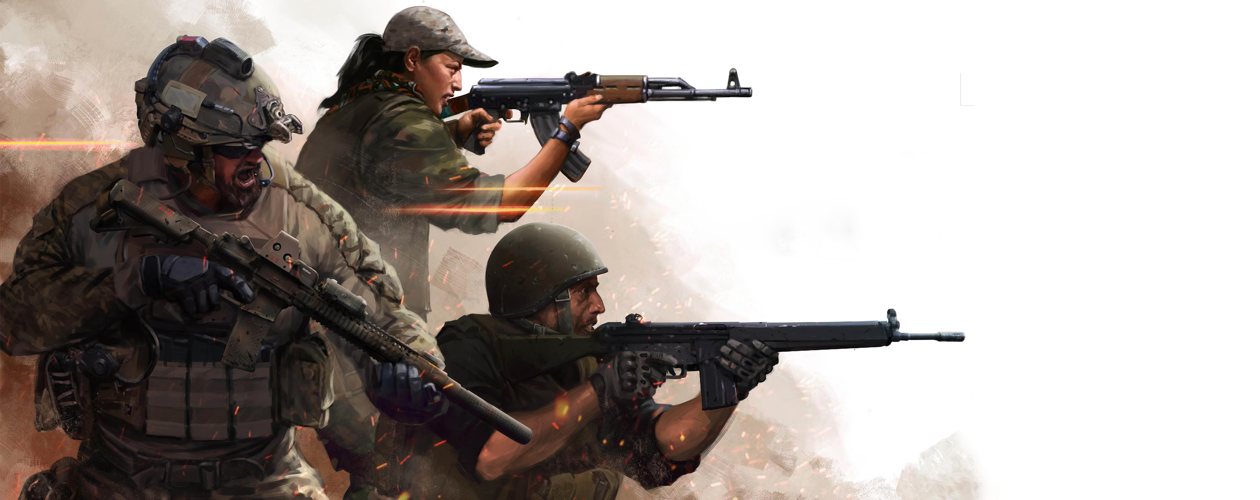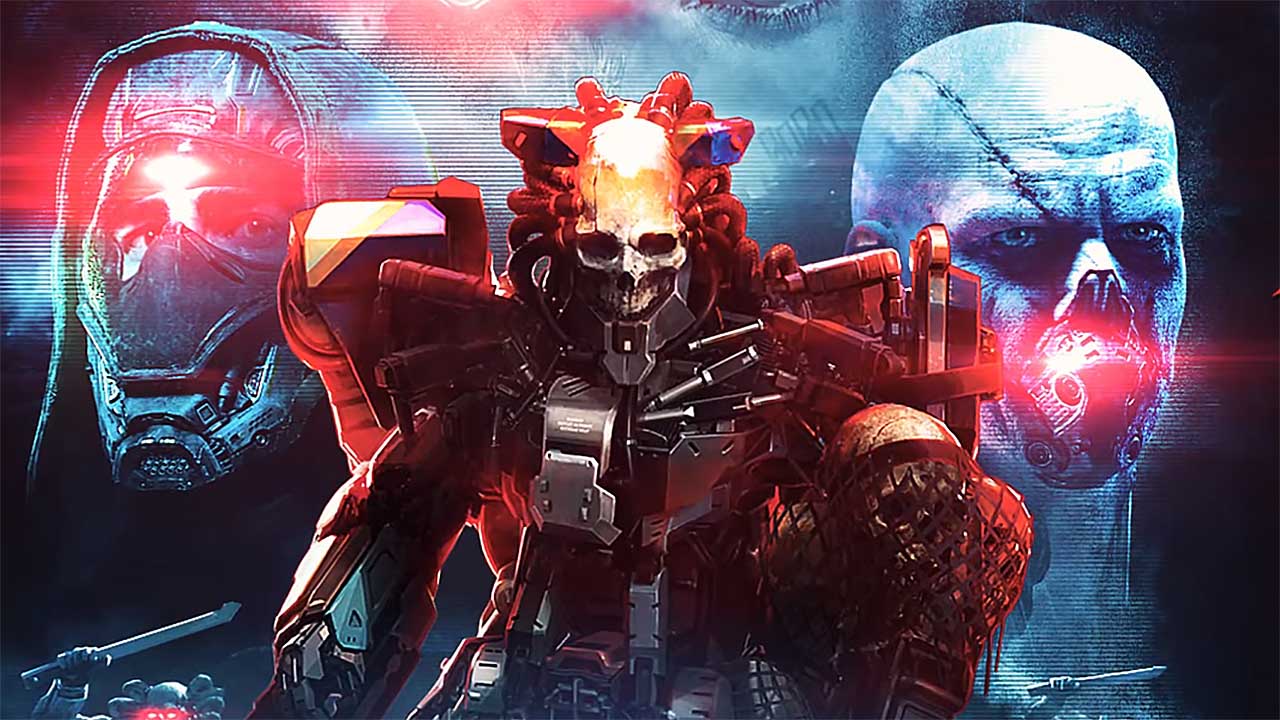Insurgency: Sandstorm Review (PS4) – Full Desert Jacket
Firing onto consoles after it’s PC excursion, does this gritty FPS live up to the noise? The Finger Guns review of Insurgency: Sandstorm.
Intensity. If there was one singular word to sum up Insurgency: Sandstorm, it would be intensity. Intensity, as you’re desperately ducking to cover as bullets shred the makeshift cover and walls around you. Intensity, as you vibrate with the blasts of enemy mortars shaking the building you’re steadfastly trying to capture alone after your squad has been wiped out moments before. Intensity, as you line up that perfect shot to down your assailant from distance, edging the trigger to manage every ounce of recoil. Intensity, as you strain every sinew of your hearing to determine the footsteps of the nearby combatant, eagerly flying in to end your existence.
Everything about Insurgency: Sandstorm is designed to have you fully to attention, completely on alert as you traverse its treacherous, but incredibly rewarding, gameplay mechanics. Unlike many other FPS titles of the current era, Sandstorm will challenge you to think and breathe as a fragile soldier, rather than a supped-up, adrenaline chugging super trooper. Akin to the older Operation Flashpoint games, Sandstorm is solely focused on the skills, and none of the frills of combat, and it’s an immensely satisfying experience for it, despite some minor issues.
Basics Boot Camp
First off, be aware that Insurgency: Sandstorm is a purely multiplayer focused experience. There’s no campaign or single player offering to speak of. Outside of the local co-op mode, everything you play will be online with other like-minded soldiers. If multiplayer FPS isn’t your thing, Insurgency simply won’t offer much as a package for you. Instead, it’s targeted specifically at those who love all things realistic combat and multiplayer shooting.
There’s a surprisingly brief tutorial to get you up to speed with the very basics of movement, shooting, reloading and achieving objectives. Additionally, it’s worth checking out the “lessons” tab for some extra information on more subtle mechanics like peeking doors, calling in field support and other tidbits. It might sound minor, but trust me when I say that these golden nuggets of intel can mean the difference between a wholly competent Insurgency player, and one who’s going to be decimated for hours on end. Put the time in to learn at the start, and Insurgency will quickly become a more deep and immersive experience for it. Boot camps are important, so make use of Insurgency’s to give you a helping hand getting going.
Which, you’ll need, because Sandstorm is brutal going at the start. My first match gave me somewhat of a false dawn – as I hoovered up some completely unearned kills, my confidence grew. Whoa boy did I have a thump back down to reality in my second match, where my obnoxiously arrogant ass repeatedly ran out of cover foolishly, fired everything in fully-auto (the sky looks nice) and ran around making myself an audible “shoot me already” sign to every other decent player. Play this like a CoD title, or even a Battlefield game, and you’re going to be more riddled with more bullet holes than an SAS firing range dummy. Being conservative and thorough is the aim of the game and Insurgency teaches you that lesson post-haste should you choose to ignore it.
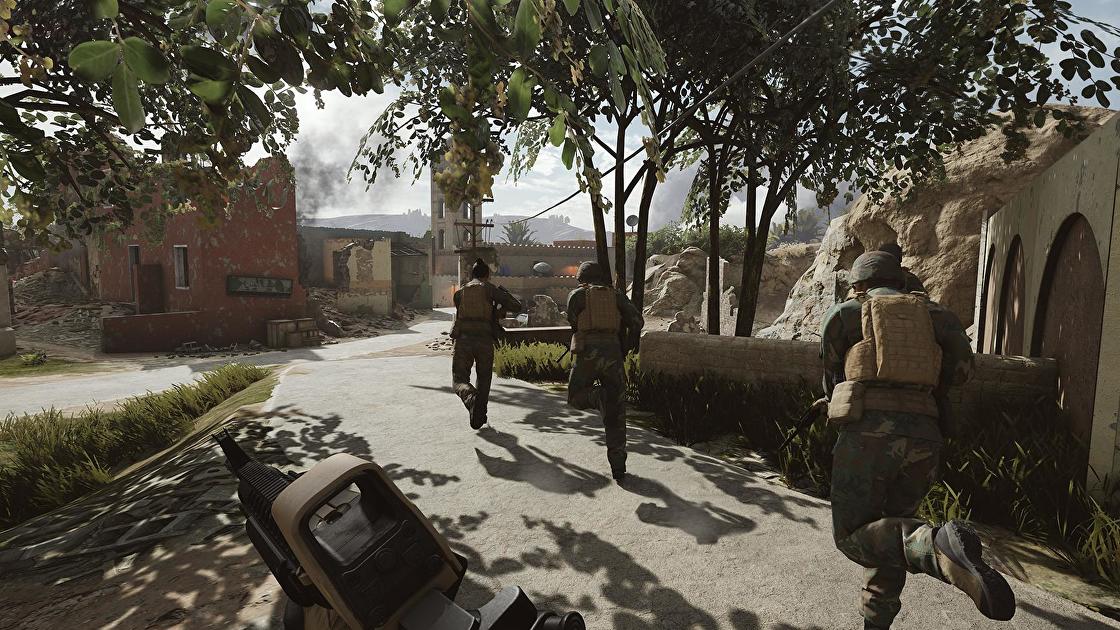
The Art of Warfare
One element of Insurgency which massively impresses the sheer level of authenticity and commitment to realism it adheres to. You’ll notice immediately how intricately detailed every one of the huge number of available weapons are. Switching between fire modes is complete with in-game animations and toggles. Shotguns blast with ferocity and power, assault rifles punch through the air, explosions rock the map and the camera. Everything feels powerful and lethal, with an immaculate attention to detail helping to immerse you in the warzone you find yourself surviving.
Hitting an enemy or hearing an ally be pierced by a round is followed by a hallowing yelp, scream or cry for aid. Footsteps are loud, with directional audio allowing for friend and foe alike to discern your location with a keen ear. Reload times are long and heavy. Recoil is all-consuming – for the first time, a game actually encouraged me to use semi-auto and single-fire modes on virtually all weapons to actually be able to tame them. Units shout out their movements, actions and when under fire. It all feeds into an overarching sense of immersion, before long I found myself thinking and acting like a soldier instead of a player, it’s brilliant, sometimes uncomfortable stuff.
There’s minimal HUD to distract from this immersion either. Unlike other popular FPS titles, crosshairs don’t exist in Sandstorm. Hipfiring is based on perception, making it a last-ditch, desperate hope instead of a clutchable mechanic. Your ammo count is hidden from view unless directly checked with a button press. Reloading half-empty clips means you could end up later reloading that same clip with fewer rounds if you choose not to discard it altogether. There’s no minimap available, your compass only appears upon callout from an ally temporarily. Sandstorm doesn’t want you distracted from the action, so keeps the information hidden and out of view until you request it, which works both as a means of immersion and a way to make you as a player think more about your actions.
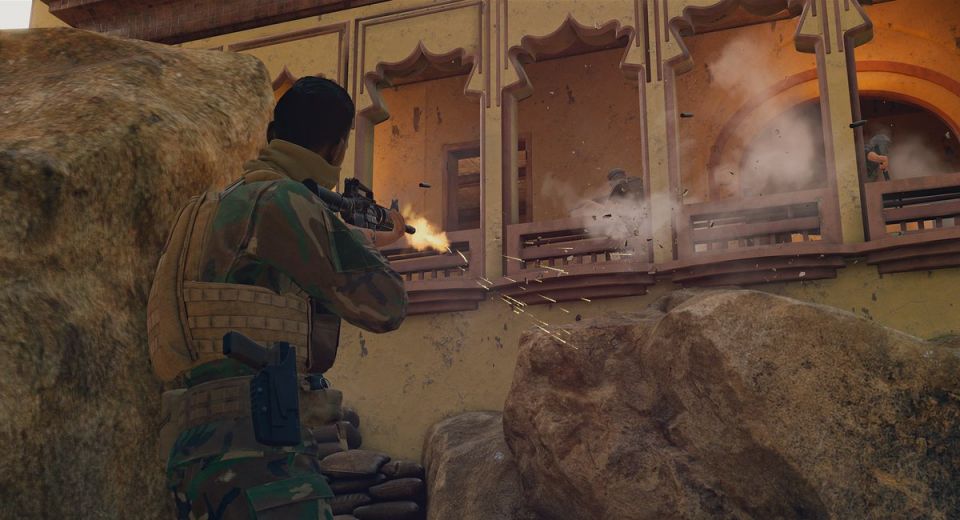
Push Forward, Soldier
Insurgency: Sandstorm’s minute-to-minute gameplay is, as a result, frantic, tactical, blistering and fear-inducing, all at once. Time-to-kill is exceptionally low, with 1-2 shots all that’s required to put down almost anyone. Supported by a handful of competitive and a couple of co-op modes, it’s got some strong foundations for long-term play. Competitive game modes (Push, Firefight, Frontline and Domination) are all objective orientated, with a heavy emphasis upon capturing control zones and occasionally destroying objective caches. The differentiation comes in how frequently your team can respawn and the flow of matches.
With every mode being 10 vs 10 and all weapons available to everyone from the get-go (provided you’ve unlocked the class that uses them), all players are set on a level playing field, enhancing the skill-based nature of the gameplay. A match of Push will ebb-and-flow as each side competes for the same objective (defenders to hold, attackers to capture) with regular respawns. Compared to a match of Firefight, where respawns only occur for your team when an objective is captured. Frontline offers the largest-scale battles, as each side tries to protect their own areas while simultaneously assaulting the other side’s.
It would be fair to say it doesn’t offer a huge amount of gameplay variety or diversity, as matches largely function similarly due to repetition of the tasks in order to win. However, this never really bothered me during my hours of play. Each match feels distinct based on the squad you’re working with or against. The design of the maps allows for multiple approaches and coordinated plans. In earnest, I actually found the simplicity of the modes a real motivator to experiment with all the available weapons and to integrate well with my team, instead of worrying about learning new modes, requirements and other faff. It’s streamlined in an efficient way to allow you to focus on the core gameplay, again doing away with the frills of having numerous modes, some of which can be completely throwaway in other FPS games.
This doesn’t mean the offering is perfect though, and without even regular staples of team or free-for-all deathmatch, some hardcore shooter fans may very well find the offering light, while some maps lend themselves more to one side or the other, with the occasional steamroll match causing a bit of frustration. These are minor gripes however, and there’s more than enough here to keep competitive players engaged for a good while.
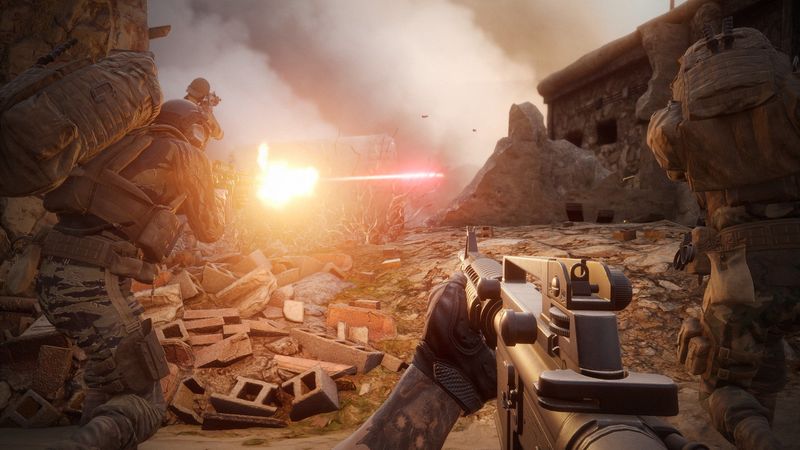
Trust Your Squadies
So what of the co-op focused modes? Well, there’s not a huge amount, but what’s here is pretty damn fun. The main mode is checkpoint, where you and your team of 8 complete a series of objectives (again, solely capturing points and destroying caches with an occasional defending an area) while facing off against an AI controlled squad. Additionally, you have a hardcore checkpoint (even more limited HUD and equipment, slower speed), survival and a horde-based outpost game type.
I spent the majority of my time in the checkpoint mode, which was the most entertaining. The opposing AI was… mixed, to say the least. On some occasions, they would crack-shot me in milliseconds, giving even the greatest marksmen of humanity’s existence a gauntlet to face. Other times, they would simply stand and watch as I sauntered up and riddled them with holes, or they fired entire clips of ammunition into the wall beyond me when it was truly easier to hit me. Outside of these rare instances, the AI holds up well, coordinating sometimes better than human foes, calling in field support, flanking objectives and generally proving a menace. While I won the majority of my matches in PvE, I’m not ashamed to admit we got wholly spanked on at least a couple of occasions.
Co-op modes moreover offer night variants, where the ensuing darkness envelopes the map and makes discerning enemies nigh-on impossible. Using night-vision, flashlight and infra-red laser attachments therefore becomes a must, and completely changes your confidence in charging into conflicts. Everything becomes another level more intimidating, as a rogue molotov can blind you just as you peek around the corner, and some sneaky insurgent promptly turns your head into a busted watermelon.
I enjoyed the co-op offering more than I expected to in truth. After unlocking the commander class and gaining access to field support, I found myself building camaraderie with my squad and a group of 8 of us ended up playing through about 5 scenarios/missions together as we deftly cleared buildings and took down enemies in perfect, harmonious tandem. It was glorious when it clicked and the PvE modes are slightly more welcoming to trying out new loadouts and mechanics.
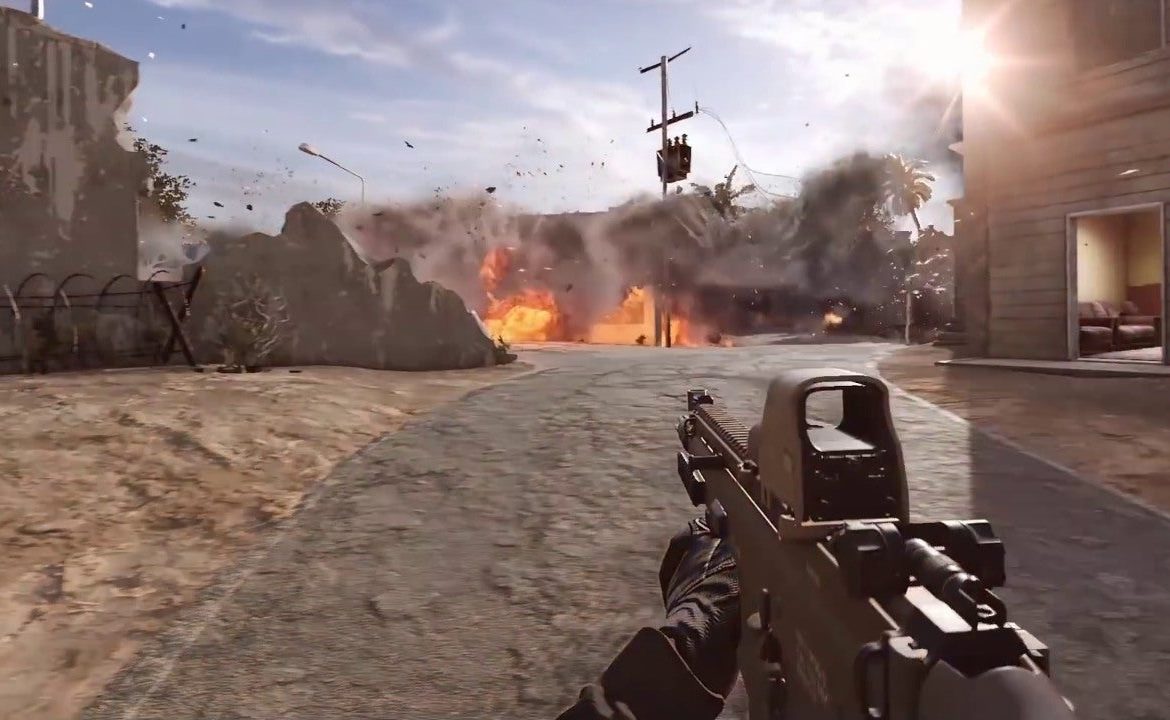
Watch Those Lines of Sight
As mentioned before, the maps of Insurgency: Sandstorm go a long way in capturing its essence and feel. Combat maps are large, sprawling affairs with an insane number of windows, doors, buildings and makeshift cover points from which a spritely combatant can end you. There’s a strong emphasis on verticality and multiple routes to any section, meaning flanking is both easily completed for your squad, and easily suffered from the enemy’s.
This feeds in beautifully to the sense of dread and anguish as you attempt to enter a claustrophobic, multi-entrance building to clear the opposing team. A foe could be hidden in any corner, any doorway, stairwell, window ledge or even tabletop. Open squares or roads spell doom for anyone stupid enough to charge into the open. Part of the learning curve to Sandstorm is developing the knowledge that someone can kill you anytime, anywhere, from multiple different points of engagement. Before long, you’ll be anxiously checking around every corner and doorway, peeking every centimetre of your vision to spot even the slightest hint of an enemy.
The maps work incredibly well and are thoroughly designed to maintain this element of uncertainty, with no traditional 3-lane offering from what I experienced. It’s a shame that maps are unfortunately all largely desert focused, as there can be some overlap and feeling of repetition to them the more you play and see the same styled buildings and beige colour scheme. Nothing that ruins the experience by any means, but a bit more variety may aided it from becoming a little stale aesthetically.

Operation Desert Bugs
Which brings us neatly into Sandstorm’s presentation and functioning. Overall, it’s a strong title graphically, with some excellent lighting effects, surprisingly detailed buildings and authentic presentation of middle-eastern battle locales. Weapons are incredibly detailed, explosions look damn-near frightening and it captures the look of a warzone virtually perfectly. Sandstorm probably boasts one of the highest quality levels of audio design in a shooter ever, too. Suppressors sound like, well, actual suppressors when fired, rifles kak and boom as distressingly intended and lack of music or distracting ambient tracks adds to the gritty, realistic tone.
But just like the most functional and effective rifles, you can unfortunately still see the discarded shell casings being ejected, floating around. Texture pop in (or lack of) was a frequent occurrence, with some significantly large objects just looking like turgid, undefined waste. Audio glitches caused my weapon sounds and movements to disappear almost completely for chunks of time before mystically returning. I had an instance of a hard crash back to the PS menu and a couple of amusing glitches where I spawned on top of an ally and couldn’t remove myself from their hitbox until they proceeded forward.
Nothing heavily affected my enjoyment of the game overall, but for a title so focused on immersion and captivating your attention, it really sticks out and rocks your investment in those moments to have them occur. The audio glitch was probably the most bothersome and frequent, as it would completely juxtapose what was happening with the rest of the stellar audio design.
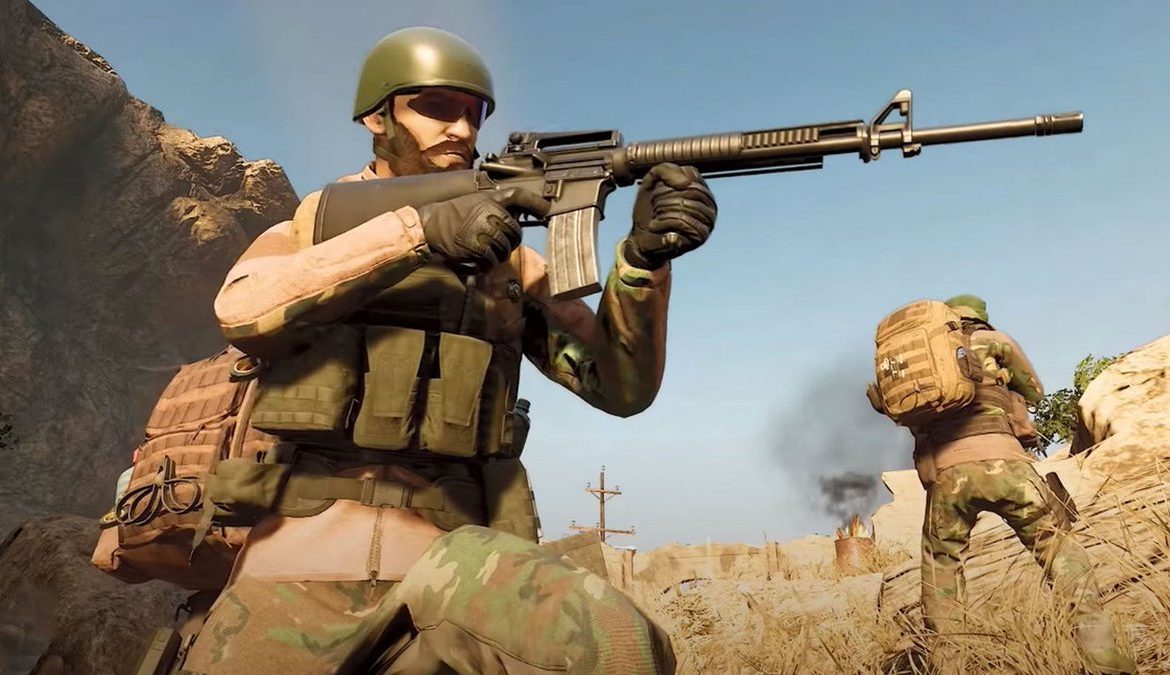
Choose Your Own Jarhead
Finally, it’s worth noting Insurgency: Sandstorm’s huge suite of customisation options, allowing you to deck out the look of both your Insurgent and Security unit. Sporting a massive range of alternative gear, you have options to change all manner of uniforms, helmets, gloves, backpacks and everything in between. With a range of common-rare colours and styles to choose from, you can create your ideal battle-hardened man-of-war.
As you level up, gaining XP from completing matches, you’ll gain currency and usually 1-2 cosmetic items. Your rate of gaining currency is at present quite slow, requiring around 10-20 matches (depending on your skill) to have enough to purchase just one rarer quality item or cosmetic. Given that you suit up your Insurgent and Security unit separately, I had to basically choose one or the other to focus on to kit them out how I wanted. But for long-term players, it does give some decent incentive and reward from playing. Speeding up the rate of currency gain wouldn’t go amiss however.
Whether you play PvP or PvE, you’ll be continually earning XP and currency, so no matter your preference you’re always ticking away progress, which is also a nice touch. You can earn trophies in both modes too, which is appreciated by this resident trophy hunter. Once you reach level 20, you’ll have unlocked every class available, with each one having a different speciality – demolition types bring missiles and explosives, riflemen are your standard grunts, the commander can request field support, which needs an observer to radio it in etc. As mentioned earlier, all weapons, attachments and gadgets are unlocked from the get-go, so once you have the associated class available, you can use any weapon your heart so desires. It was refreshing to have everything available from the off, allowing you to openly experiment and create your own set of death-inducing tools.
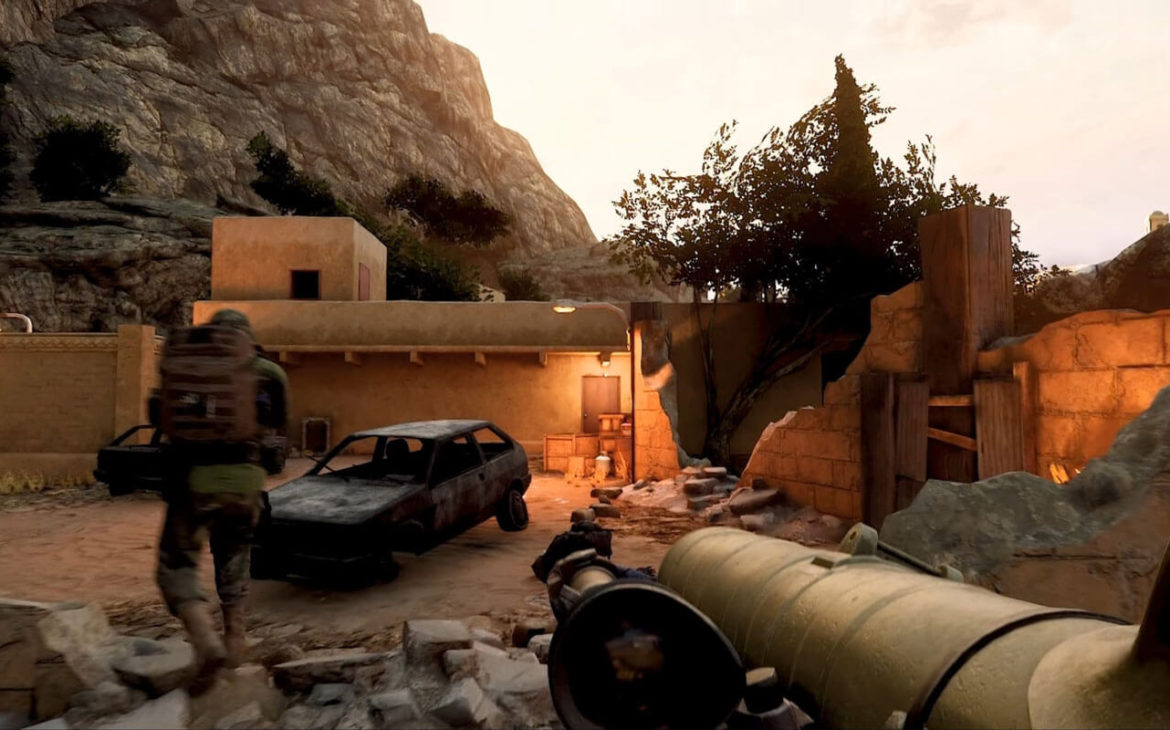
A Grittier, Ultimately Rewarding, Warzone
Insurgency: Sandstorm is a game I would therefore heartily recommend, but only to a particular type of player. If you aren’t the biggest fan of shooters and you want something a little more accessible or casual, this game unfortunately won’t be for you. For those who want a gritty, realistic, punishing but entirely more satisfying FPS, I don’t think there’s a much better package for you than what Sandstorm offers, provided you enjoy multiplayer.
Sandstorm will punish you, break you down, and pull apart all of your muscle memory from other traditional FPS titles. Stick with it, through the mud, and the hurt, and the screams of pain however, and you’ll be hugely rewarded with a title that respects careful, thorough and tactical play. There’s simply little else that can give you the satisfaction of nailing that perfect long-range headshot – as the blood cloud sprays out, you’ll know you earned that kill. That’s the essence of Insurgency: Sandstorm, no frills, only skills, and kills.
Insurgency: Sandstorm offers a brutal, satisfying and bleak FPS experience for those willing to immerse themselves in its tactical, punishing offering. Despite some glitches and slightly repetitive design, it stands tall as an inspiring shooter that will improve not only your skills as a player, but will also have you thinking like a soldier. The desert may be a Hellish place to be, but damn is it a rewarding and satisfying experience too. If you enjoy multiplayer shooters, there are firefights here you need to engage in for yourself.

Insurgency: Sandstorm is available now on PS4 (review platform), Xbox One and PC.
Developer: New World Interactive
Publisher: Focus Home Interactive/ Focus Entertainment
Disclaimer: In order to complete this review, we were provided with a promotional copy of the game. For our full review policy, please go here.
If you enjoyed this article or any more of our content, please consider our Patreon.
Make sure to follow Finger Guns on our social channels –Twitter, Facebook, Twitch, Spotify or Apple Podcasts – to keep up to date on our news, reviews and features.
